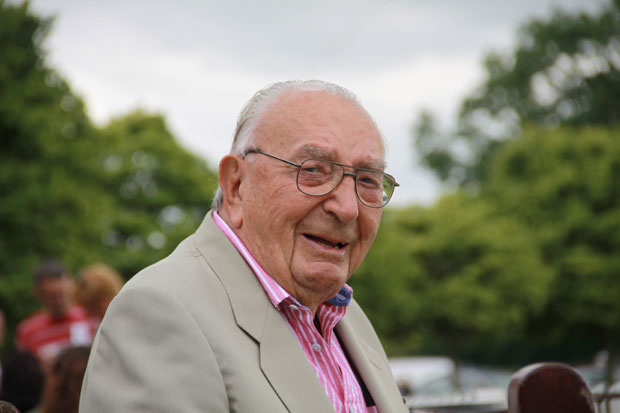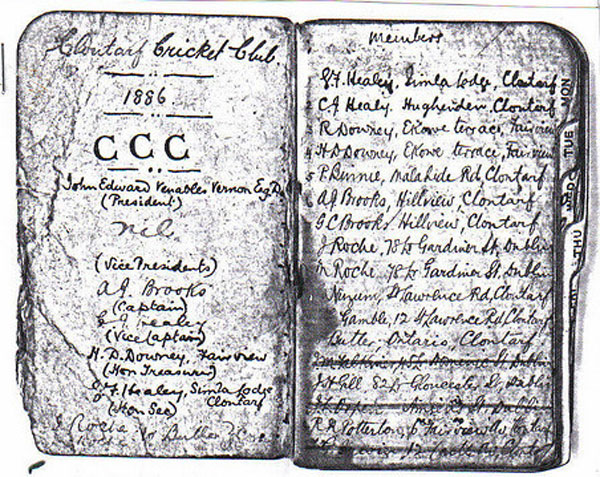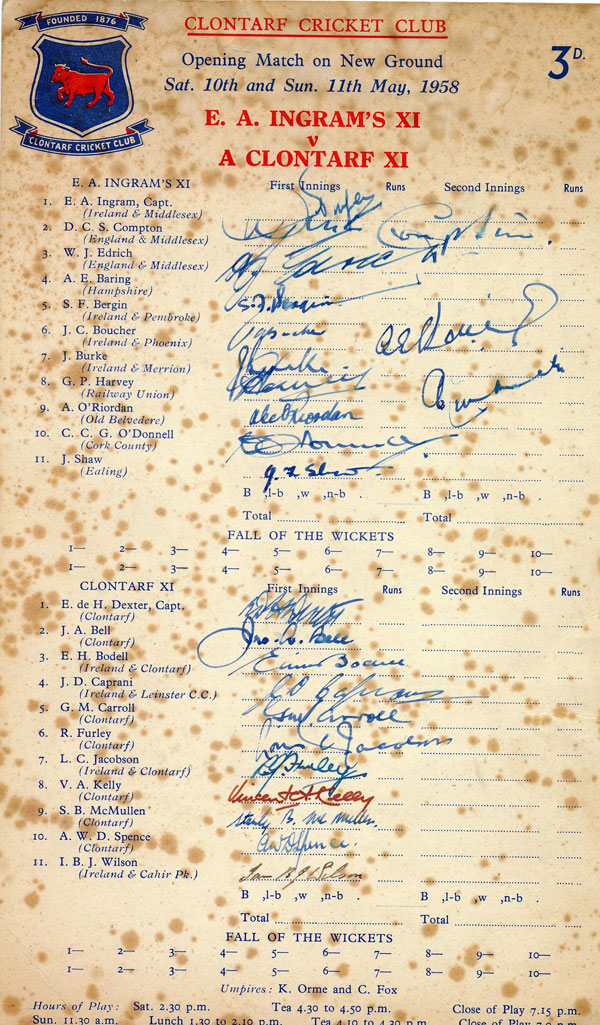I take sports pictures most weekends. Over the winter months, you will find me on the side of a rugby pitch or hockey pitch in the main. Sometimes football, sometimes Gaelic games, I'm not fussy.
The summer sees me patrolling the boundary of a cricket pitch. I am not a great spectator so the photography helps. Irrespective of the sport however, is the need to get the photos processed and out there. Whether that is the sports website, twitter, instagram page. Let the images pass for a few days and the interest is gone. Such is the way with sports photography.
When Barry Chambers asked for images for this series of articles, beyond the obvious couple, I was a bit lost. Then Ian Johnston posted a lovely image of Des Cashell and some great words on one of Irish cricket's great characters and it got me thinking a bit more about the images that we take in our sports clubs.
The temptation is to take images of the action but perhaps we should pay some more attention to those outside the boundary ropes and in some small way recognise their contribution to our sport and our clubs, having come from an era which was not so well visually covered.
My image today is one of Evans Dexter, a simple photo taken at the celebration of Clontarf's 140th anniversary. Evans is the father of Clontarf cricket, in my view. He is the man who built the modern day Clontarf Cricket Club.

Yes there has been other Mr. Clontarfs since the club's foundation in 1876. J.W. Oulton and Allen O'Donnell had valid claims to the title but it is the length and depth of Evan's service to Clontarf that stands him apart.
Evans was central to the very creation of the Castle Avenue ground. For those who may not know, cricket has been played at Castle Avenue since 1896 but originally on the site of the current rugby grounds.
What we now know as the cricket ground was an area called the Lido grounds and it was there that Clontarf Hockey club played, while you would also find 2 tennis courts. The needs of World War 2 meant that this land became allotments before the land was offered to Clontarf Football Club for rugby. After a couple of years they realised that the grounds were really too narrow so a swap was suggested.
In 1950, Allen O'Donnell called upon long standing club member Bertie Aston a renowned civil engineer to check the Lido to make sure that the land was suitable. But he also called upon a young 22 year old veterinary student to be part of the party that would make such a momentous decision. Even at that age Allen saw something in the young Evans.

But Evans is not just an administrator, that same year as the new ground was surveyed, he batted at 5 in the Leinster Cup final winning team and was second top scorer. Neither Oulton nor O'Donnell would hold themselves up as top senior cricketers but Evans was a mainstay of the Clontarf team for some time and indeed he represented Leinster.
By 1958, Evans was captaining the side and nothing could have been more appropriate since that was the year the new ground was opened. The world stars Edrich and Compton came to Dublin to play in the opening game. The game and associated events were a huge endeavour and a huge success.
Evans is also an important member of the rugby club both as player and administrator, though he always calls it the Football club. Over the years, he has been passed memorabilia and documents for safe keeping including a Secretary's notebook dating from 1886, a remarkable piece of history.

There is little that Evans cannot tell you about Clontarf CC, past or present. The same man who has been entrusted as a guardian of the history of Clontarf will happily sit on the side of the ground and chat to the youngest of players about the quality of their cover drive.
In the year that Clontarf relaid its square, the first time major work had been carried out since 1958, let us hope that we all will have the chance to have such boundary conversations at some stage and make sure your camera does not ignore those on the sidelines, they have a story to tell too.
